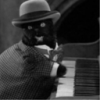After the background check at the Pearly
-
After the background check at the Pearly Gates , he signed the forms and received his wings, halo and standard issue harp, but what he really wanted was a saxophone.
5 -
He inquired at instruments distribution and was advised that saxophones (along with electric guitars, fiddles, moog synthesizers and kazoos) were the work of the devil. Harps were
6 -
the work of tiny little fairies named Matilda. The "Keytar" was the work of severely sexually frustrated Ice-Landic types in black turtle necks. The cowbell was the work of the
5 -
tight-shirted big-bearded gentleman with more gusto than Gustav the Gastronomical Genius. The triangle is a musical instrument providing a panoply of possibilities, invented by
5 -
a maths teacher in a desperate effort to be accepted into the arts community and have some purpose in the end of year school play. Either way gusto wasn't enough to
6 -
win him the leading role. He was offered the job of key grip, whatever that was. The math teacher found himself stalking the actors. He would show up with lines memorized and
6 -
only find out after the fact that he'd memorized lines not from the pertinent script but from the Advanced Calculus textbook assigned to his students. This led to awkward
6 -
rehearsals for the school pageantry. "Truer words never said, fortune is a strumpet!"says Hamlet. Horatio responds, "The limit of x as it approaches negative infinity of e to the x
5 -
is... well... I think I didn't cared enough about the math hours". "To be or not to be... good at math" - says Hamlet. "Math didn't killed anyone". "Yet" - adds Horatio. And the
5 -
story pretty much stopped right there. It just didn't add up.
6
- Started
- 2011-10-27 20:39:54
- Finished
- 2014-06-20 18:58:48









0 Comments
Want to leave a comment?
Sign up!